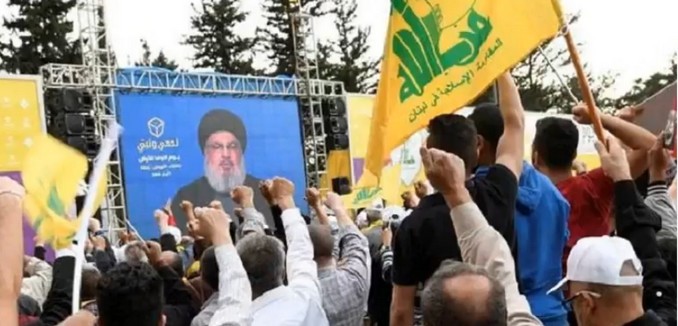Hezbollah, the Iranian-backed terrorist group that exerts political and military control over Lebanon has won a “decisive” electoral victory and emerged stronger as the result of the first parliamentary elections held in that country in nine years, Reuters reported Monday.
A coalition constituting Hezbollah and allied parties – including Amal, another Shiite party, and the Free Patriotic Movement, the country’s largest Christian party – is poised to capture a majority of the seats in Lebanon’s parliament according to preliminary results reported on Monday.
The Future Movement headed by Hezbollah opponent Sa’ad Hariri lost seats and now appears to have only 18 seats, a loss of 16.
In October 2016 parliament elected Michel Aoun of the Free Patriotic Movement, a Hezbollah ally as president. Hezbollah kept Lebanese politics in limbo for two and a half until it could get an ally elected as president. Once Aoun formed a government, it was able to pass a new election law.
The election was held under that law adopted last year, which was expected to give Hezbollah a majority in parliament.
The new government previously had expanded the number of cabinet positions to 30 and appointed Hezbollah and Syria supporters to 17 of them.
Israeli Education Minister Naftali Bennett said that the results of the Lebanese election “strengthen what has been our approach for a while: Hezbollah=Lebanon.”
Bennett echoed the assessment of former foreign minister and Zionist Union MK Tzipi Livni, who said in February 2017, “today, Hezbollah is part of the Lebanese government and therefore, if we will be forced to fight, the next war will be against the state of Lebanon, which will bear the diplomatic responsibility for Hezbollah’s actions.”
Hezbollah’s emerging control over Lebanon is an extension of Iran’s plan to establish itself as regional hegemon, Hanin Ghaddar wrote in The Iranian Empire Is Almost Complete, which was published in the December 2016 issue of The Tower Magazine.
Since the Islamic Revolution in 1979, Iran has been using a number of tools to achieve its foreign policy goal of spreading Shi’ite Islamic revolution and identity throughout Shi’ite communities in the Middle East in order to become the regional hegemon. The country’s nuclear program and its support of “resistance” against Israel were the primary tools used to achieve this goal. The nuclear program was meant to force the international community to recognize Iran’s power and negotiate a deal that would give Iran a free hand in the region in return. And resistance was used to garner popular support and establish a threat to Israel that reflects Iranian power.
From the very beginning, Iran’s goal has been the establishment of a Shi’ite Arab territory that physically links Iran to southern Lebanon via Iraq and Syria. This required Iranian control—mostly by proxy—over three capitals: Baghdad, Damascus, and Beirut.
The Syrian civil war was not good news for Iran and its proxies in the region, but as it dragged on, it provided Iran with an opportunity to accelerate its control over the three capitals and secure the contiguous territory it needs. While the international community is consumed with fighting ISIS, Iran is almost done fortifying its greater Shi’ite territory.
[Photo: Kale TV / YouTube ]




